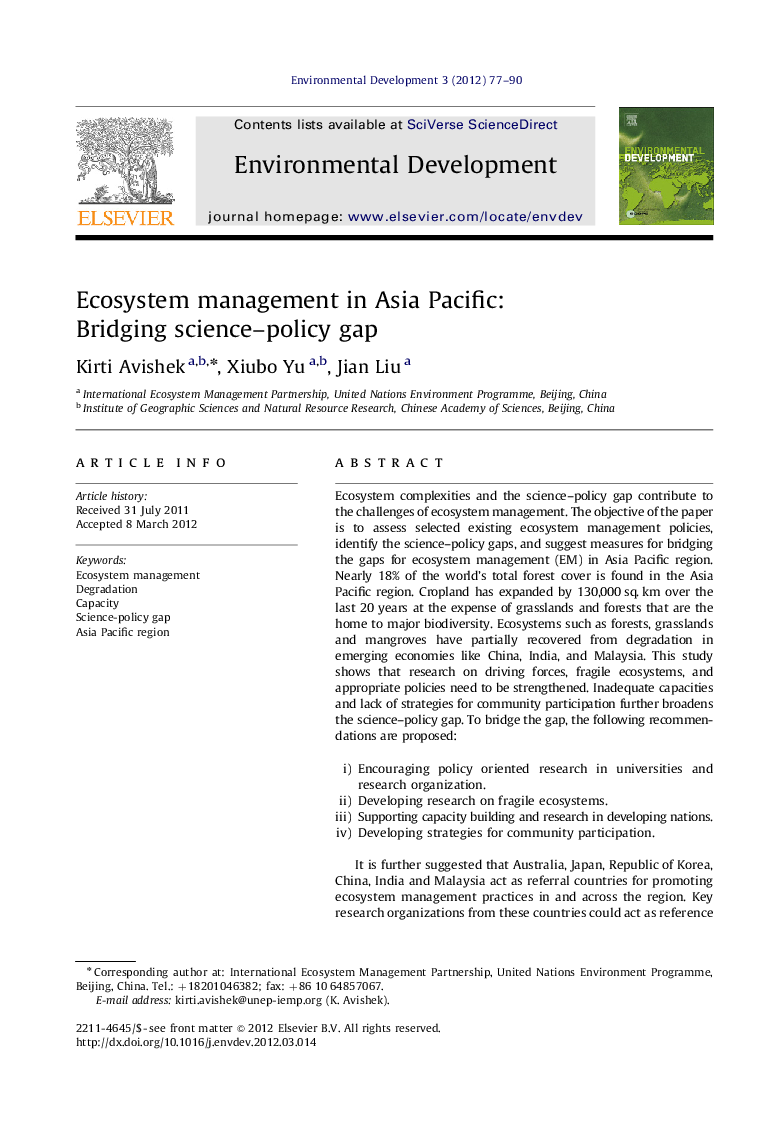| کد مقاله | کد نشریه | سال انتشار | مقاله انگلیسی | نسخه تمام متن |
|---|---|---|---|---|
| 4391585 | 1618098 | 2012 | 14 صفحه PDF | دانلود رایگان |

Ecosystem complexities and the science–policy gap contribute to the challenges of ecosystem management. The objective of the paper is to assess selected existing ecosystem management policies, identify the science–policy gaps, and suggest measures for bridging the gaps for ecosystem management (EM) in Asia Pacific region. Nearly 18% of the world's total forest cover is found in the Asia Pacific region. Cropland has expanded by 130,000 sq. km over the last 20 years at the expense of grasslands and forests that are the home to major biodiversity. Ecosystems such as forests, grasslands and mangroves have partially recovered from degradation in emerging economies like China, India, and Malaysia. This study shows that research on driving forces, fragile ecosystems, and appropriate policies need to be strengthened. Inadequate capacities and lack of strategies for community participation further broadens the science–policy gap. To bridge the gap, the following recommendations are proposed:i)Encouraging policy oriented research in universities and research organization.ii)Developing research on fragile ecosystems.iii)Supporting capacity building and research in developing nations.iv)Developing strategies for community participation.It is further suggested that Australia, Japan, Republic of Korea, China, India and Malaysia act as referral countries for promoting ecosystem management practices in and across the region. Key research organizations from these countries could act as reference points for developing nations. Success stories from developed and emerging economies can also help in improving the region's research capabilities, policy orientations, and capacities.
Journal: Environmental Development - Volume 3, July 2012, Pages 77–90